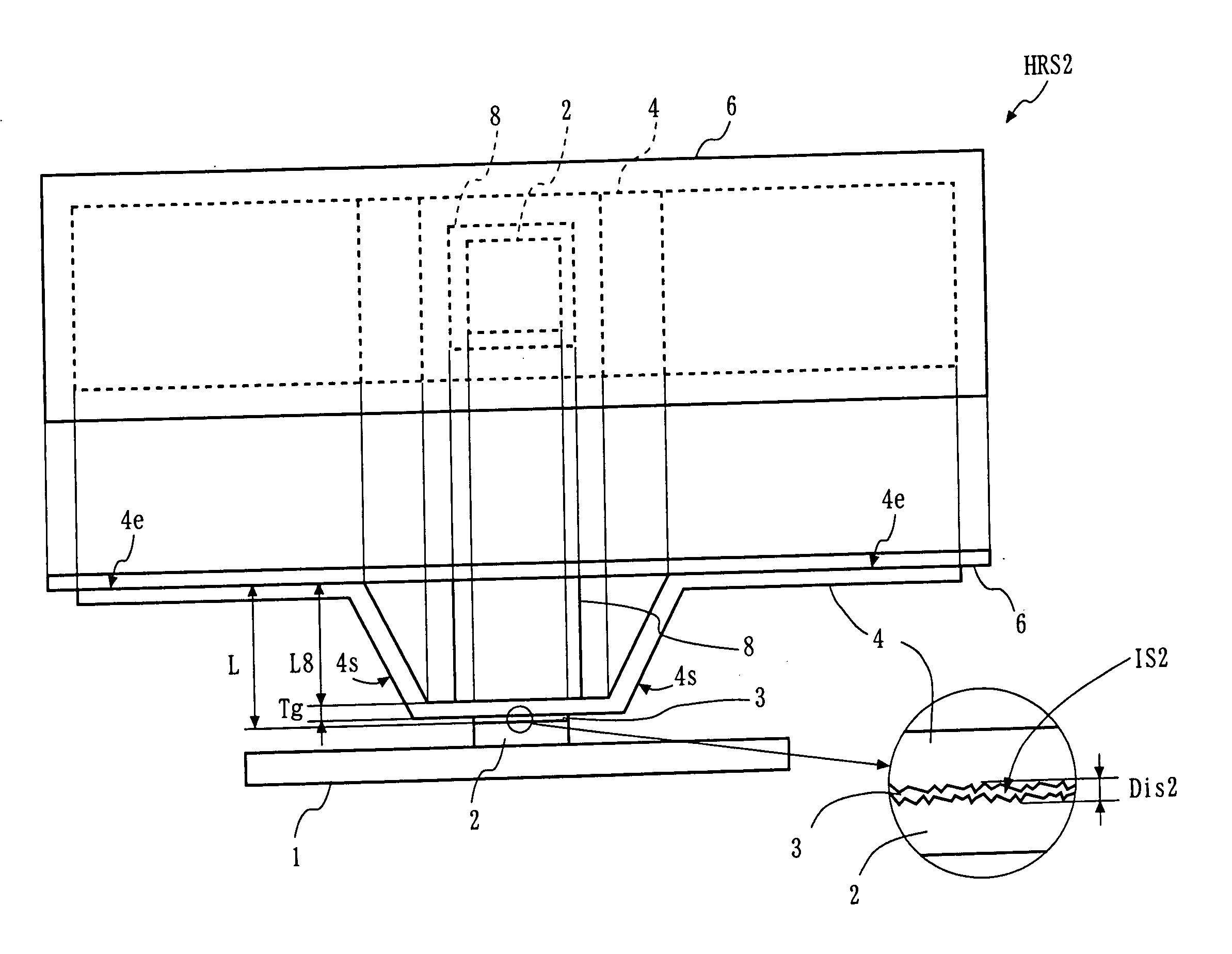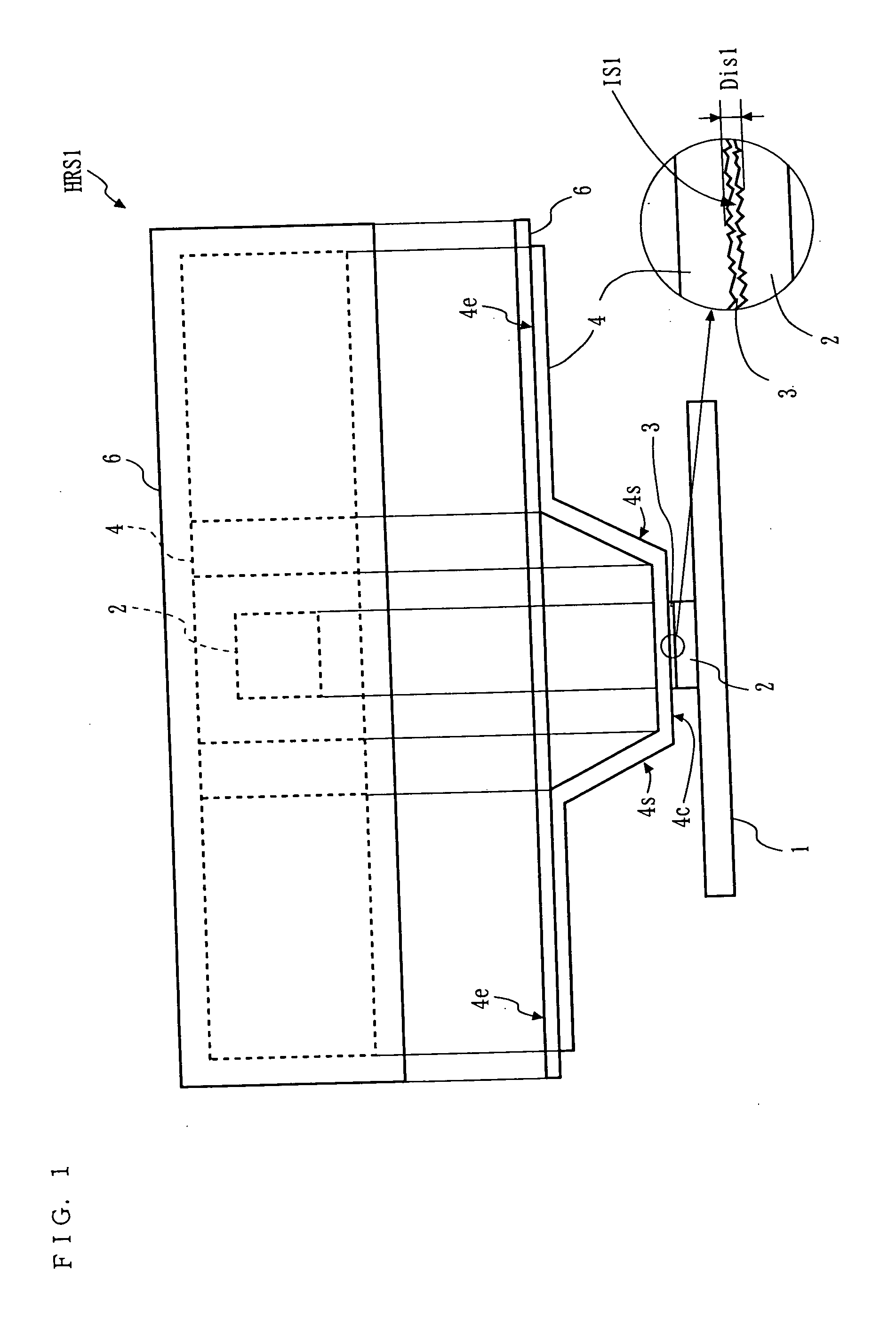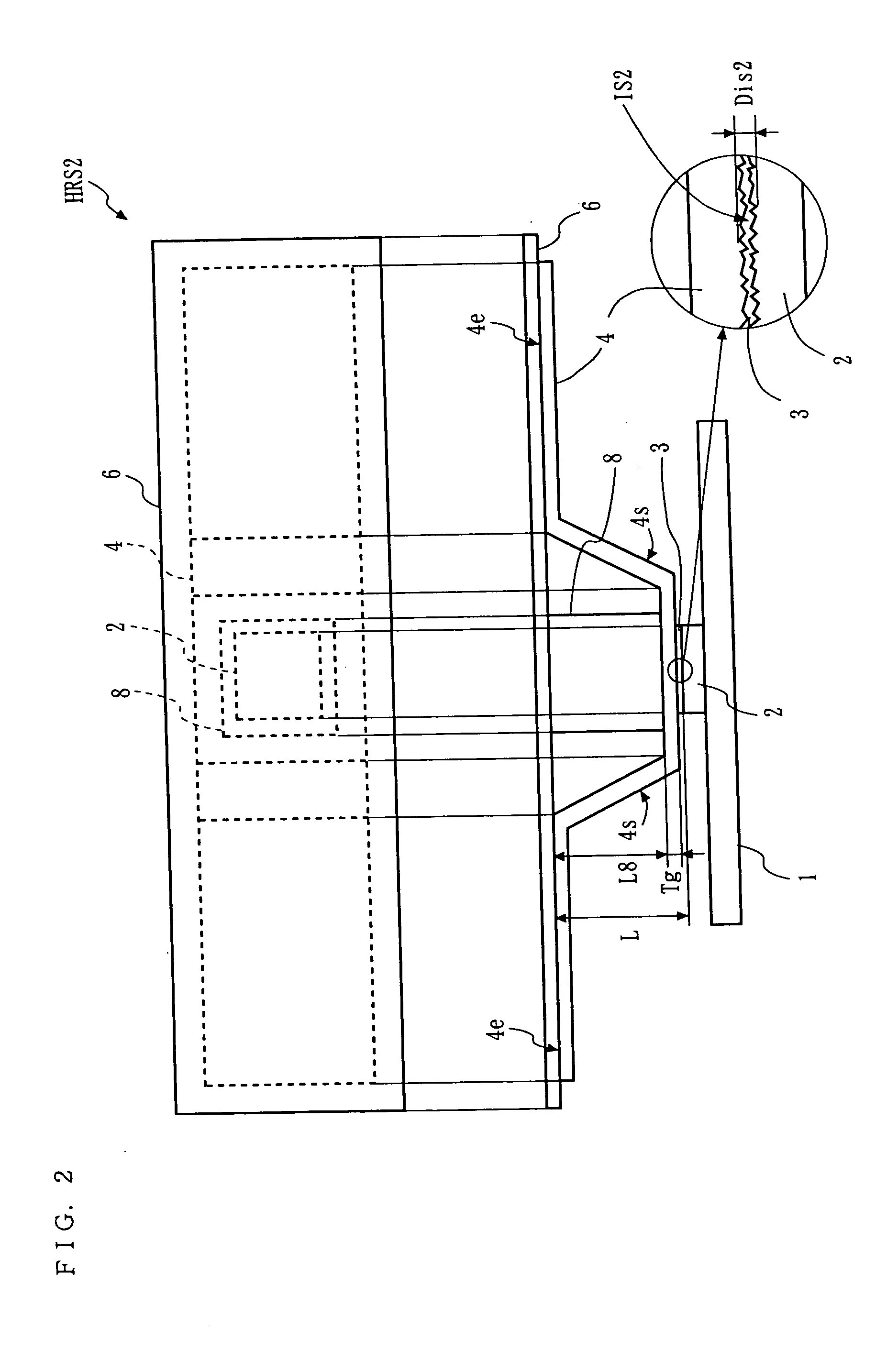Heat-radiating structure of electronic apparatus
a technology of electronic equipment and heat-radiating structure, which is applied in the direction of electrical apparatus casings/cabinets/drawers, instruments, and semi-conductor/solid-state device details, etc., can solve the problem of overfilling of thermal conductive components, and achieve the effect of improving heat-radiating performance and variable siz
- Summary
- Abstract
- Description
- Claims
- Application Information
AI Technical Summary
Benefits of technology
Problems solved by technology
Method used
Image
Examples
first embodiment
[0023] A heat-radiating mechanism and a heat-radiating structure of an electronic apparatus of the first embodiment of the present invention will be described with reference to FIG. 1. FIG. 1 shows a state viewed from the side of a heat-radiating mechanism constituted inside a notebook-type personal computer as an example of an electronic apparatus. It should be noted that members that are irrelevant to the heat-radiating mechanism such as a housing and a power source, are not shown.
[0024] In the notebook-type personal computer of this example, a heat-radiating grease 3 is applied to a CPU 2, which is a heat-generating component mounted in a print wiring board 1. Thereafter, a flexible graphite sheet 4 having a high thermal conductivity in the plane direction is thermally connected thereto in a such a manner that the lower surface of its central portion 4c that is obtained by folding the sheet with steps is attached in a non-fixed manner, and the upper surface of both end portions ...
second embodiment
[0036] The heat-radiating mechanism of an electronic apparatus of a second embodiment of the present invention will be described with reference to FIG. 2. Similarly to in FIG. 1, FIG. 2 shows a state viewed from the side of the heat-radiating mechanism configured inside a notebook-type personal computer as an example of an electronic apparatus. A heat-radiating structure HRS2 of this embodiment is configured by adding an elastic member 8 to the heat-radiating structure HRS1 shown in FIG. 1. In this embodiment, a space (clearance) between the graphite sheet 4 and the CPU 2 is referred to as “thermal conduction resistance space IS2”. The distance in which the graphite sheet 4 is spaced apart from the CPU 2 is referred to as “resistance distance Dis2”, and the area in which the thermal conduction resistance space IS2 is present in the direction parallel to the graphite sheet 4 and the CPU 2 is referred to as “resistance area Ais2”. The size of the thermal conduction resistance space IS...
third embodiment
[0048] The heat-radiating mechanism of an electronic apparatus of a third embodiment of the present invention will be described with reference to FIG. 4. Similarly to in FIG. 1, FIG. 3 shows a cross section of the heat-radiating mechanism configured inside a notebook-type personal computer as an example of an electronic apparatus. A heat-radiating structure HRS3 of this embodiment is obtained by replacing the graphite sheet 4 in the heat-radiating structure HRS1 shown in FIG. 1 by a graphite multilayered sheet 14. In this embodiment, a space (clearance) between the graphite multilayered sheet 14 and the CPU 2 is referred to as “thermal conduction resistance space IS3” (not shown). The distance in which the graphite multilayered sheet 14 is spaced apart from the CPU 2 is referred to as “resistance distance Dis3” (not shown), and the area in which the thermal conduction resistance space IS3 is present in the direction parallel to the graphite multilayered sheet 14 and the CPU 2 is ref...
PUM
 Login to View More
Login to View More Abstract
Description
Claims
Application Information
 Login to View More
Login to View More - R&D
- Intellectual Property
- Life Sciences
- Materials
- Tech Scout
- Unparalleled Data Quality
- Higher Quality Content
- 60% Fewer Hallucinations
Browse by: Latest US Patents, China's latest patents, Technical Efficacy Thesaurus, Application Domain, Technology Topic, Popular Technical Reports.
© 2025 PatSnap. All rights reserved.Legal|Privacy policy|Modern Slavery Act Transparency Statement|Sitemap|About US| Contact US: help@patsnap.com



